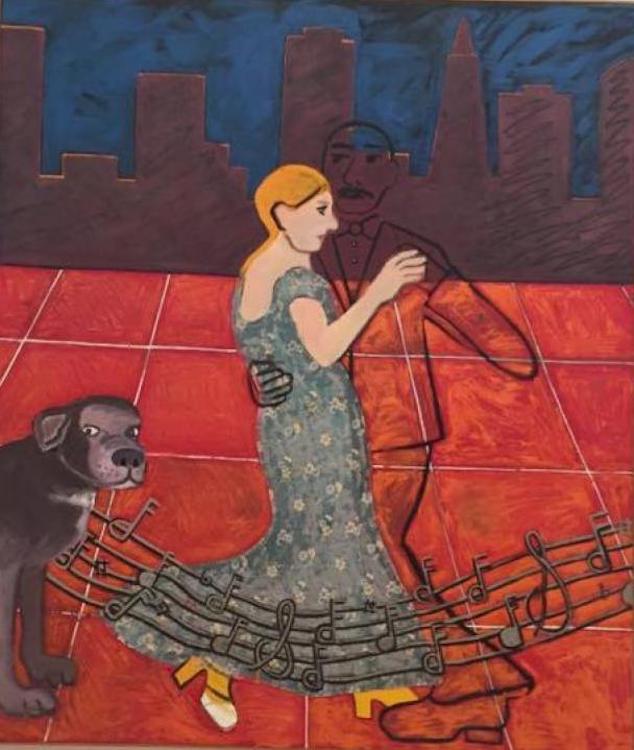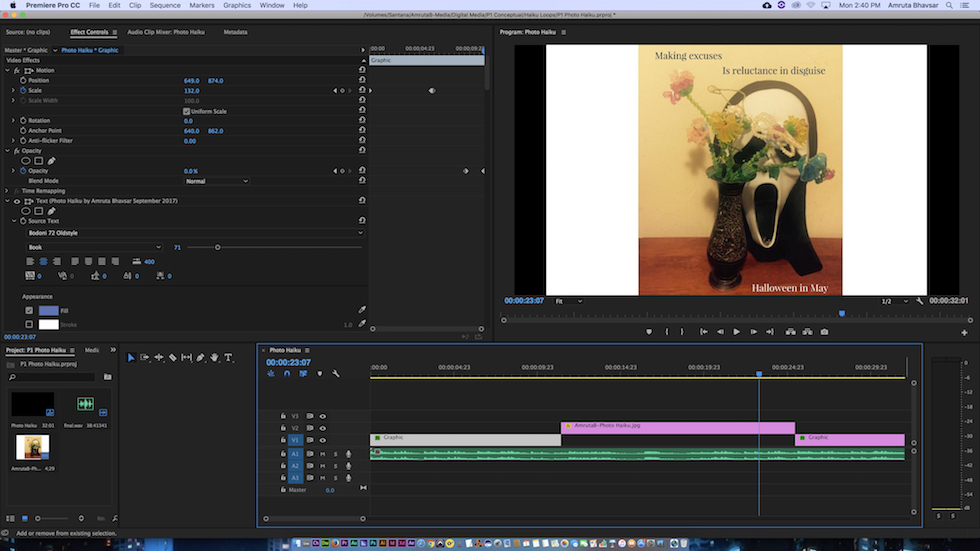The purpose of this Conceptual Project is to create a website using HTML that contains all of the productions in our classes that we've done so far at Freestyle. For example, photos I took for Design, poems I wrote for English, and videos and music I created for Digital Media are the elements that make up this site. Each class offered different pieces of content to the website and the rules of C.R.A.P., which we learned about in Design, were utilized in the structure of it. Some of things you can find in this website are four different poems, three of which have videos and accompanying music, two conceptual photos, and two pieces of produced music. In the Conceptual Unit, I learned so much about so many programs (Dreamweaver, Protools, Premiere Pro, Photoshop) and also many artistic and technical things I never considered before. I learned about the principles of design and how to take photos with a camera and adjust the settings to your advantage, and also how to mix and record music. From this entire Conceptual Project, I enjoyed putting all my work together in one organized place and valued learning how to do so.
In English, we wrote 3 types of poems, not including the haiku: free verse, ekphrastic, and spoken word. The free verse poem was about the same concept as the haiku and was the standard poem with lots of lines and optional rhyming. The ekphrastic poem was a poem written based off of a piece of visual art. To find our art, we went to the San Francisco Museum of Modern Art and then wrote a poem about how we interpreted the image. The spoken word poem was a poem written to be performed and convey vocal subtleties that would otherwise be lost if it weren’t spoken at all.
Concept statement: I am exploring the feeling of reluctance through the experience of making excuses.
I chose to write my ekphrastic poem about a painting of a woman dancing with the outline of an invisible man.


He was red orange
His touch like the sound of a harp
His slow dance in time to the muted beat of his heart
“He’s not real,” they said
But I knew he was
We came here every night
To dance under city lights
His eyes were a G Major scale
His suit like a starry night
He was like velvet against my cheek
“You’re dancing with your dreams,” they said
But I knew he loved me
He came here every night
Just to dance
With me
He never spoke and was
As silent as a mannequin
But he was a setting sunset
And I wouldn’t have had him any other way
My mother told me to stop playing games
And to get a real man I wanted to listen
And I almost didn’t
But then he didn’t show up
I had to dance alone
“He’s not real,” they said
He didn’t show up the next day either
“He’s not real,” they said
He didn’t show up for almost a week
“He’s not real,” they said
I thought they were right
But then he finally showed up
For the first time, he spoke
His voice like an ocean breeze
“I’m real,” he said
“I know,” I said
“You’re insane,” they said
“I know,” I said
That was why I brought the metal ice
And laid on the loathsome dance floor
Letting crimson dance
Where he and I once did
He was not real
He never was
Yet at the wake
A red orange man
With G Major scale eyes
And a suit like a starry night
Stood up to speak
The spoken word assignment was to write a poem and record yourself performing it. There was no specific concept statement or other medium to base this poem off of, unlike the Free Verse and Ekphrastic poems.




